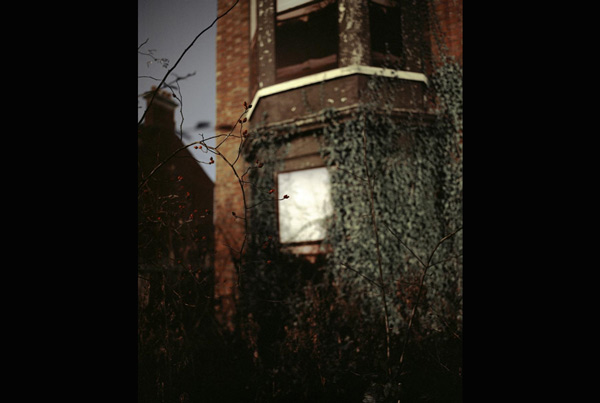
This guest blog by photographer Chad Alexander, who was born in 1990, reveals his experiences capturing images of Belfast and life in the city after the Belfast/Good Friday Agreement.
Dr Lauren Arrington (Irish Studies) finds out more about Chad and his work, which formed part of the 'Agreement: A People's Process' exhibition:
Dr Lauren Arrington (LA): You gave your series of photographs the title, 'Entries'. As someone born near the end of the Troubles, what was your 'entry' into the conflict?
Chad Alexander (CA): I was born in 1990 and the Good Friday Agreement took place in 1998. ‘The Troubles’ are deemed to have ended once this agreement was made. The conflict was still going during the nineties but was less brutal than previous decades. Therefore, in a way your question opens a relevant oxymoron, how can one enter a conflict once it's over?
When I was very young it was at the tail end of a time when British soldiers occupied the streets of Belfast. I vaguely remember one soldier letting my friends and me look through the scope of his rifle. The soldiers’ presence was normalized, and I assumed they were just meant to be there. Later during my teens, I became more aware of the political situation in Northern Ireland and of the divides that existed. I can clearly recall going to riots, not because I was interested in fighting with 'the other side,' but out of sheer boredom and because that was just what was going on.
One day I asked my mother if she had many photographs from her childhood, she told me there was only one in existence. I was stunned, then she told me that her parents had been told to vacate their house and it was burnt to the ground a few minutes later whilst they stood and watched. All their belongings that held memories and sentimental value were lost. This had a profound impact on me.
As I matured I began to understand the conflict more deeply and really started to see how aspects were quite ridiculous. How growing up on either end of a street could dictate who your friends are, the football team you support, the school you go to and most crucially your identity.

LA: How has growing up in such a violent environment affected your work?
CA: When I was 16 years old I took a beating from a stranger walking home one night in the neighborhood where I had grown up. The motive wasn't sectarian, in fact there wasn't any definitive motive at all. This brought me to a long and ongoing period of reflection about how convoluted the situation and some people were in areas that were hit hardest during the Troubles, the everydayness of violence that exists and how it was forged throughout the conflict and afterwards.
The negligence and lack of investment in areas outside of the commercial and more affluent areas is something that has always struck me. The psychological wounds that were uncared for, handed down generations and the new ones that have manifested. The fact that many people's fates are often beyond their control, blowing in the wind of chance. This revelation was in many ways my entry to the conflict, or more specifically the post-conflict climate of Northern Ireland and the work that I would create.

LA: You mention the lack of investment in Northern Ireland and how that compounds what you describe as the “everydayness of violence.” How do you see your work, and arts such as photography, in relation to these subjects?
CA: I consider my work and the work of many other artists to revolve around daily struggles, in the many different shapes and forms they come in. In this case the battle between living a peaceful and fulfilling life against the forces of oppression and repression is at the heart.
This battle can be violent, physically and psychologically, and for me I think photography is a very powerful medium for showing these struggles; it has an undeniable relationship with the world and some sense of reality. It relies on what exists. This makes it a very unique form of art and allows for a great directness and believability, which is great but can also be dangerous when in the wrong hands.
I hope that people can see the duality in the work. These people are strong, live very fulfilled lives and there is a great amount of tenderness there. They also live with a dark history that overshadows Northern Ireland, and this has manifested into newer problems, like a frightfully high suicide rate, particularly amongst young people. Violence still exists here, it’s just less recognizable and in a strange way more abstract.
I think a relation between my photography and this problem lies here, a recognition of the unusual nature of this place, the difficulty of understanding the situation, and how the past has shaped our current state and future. Arguably a degree of normalization of violence has taken place here, and this is a point that has always struck me and I see my work as a subjective look at these complex matters.
Find out more
Explore the online exhibition: 'Agreement: A People's Process'